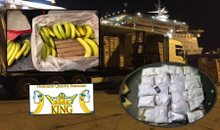
 Flash News
Flash News
Pëson arrest kardiak, ndërron jetë turisti italian në Zvërnec
Russia prepares summer offensive with help from North Korean troops in Ukraine
Italian dies on Zvërnec beach
Guard found hanging in the building where he worked in Vlora
Voice from the Council of Europe: Albania, a safe haven for drug money laundering and a threat to Europe
Serious consequences for residents/ Bulqiza mines, the biggest air and water polluters
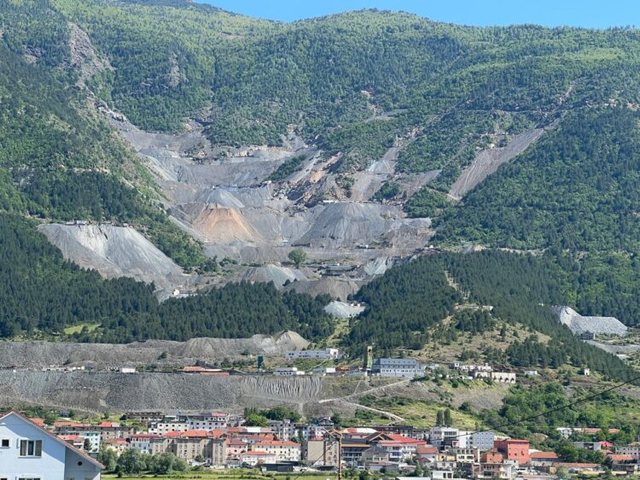
For more than seven decades, life in the impoverished town of Bulqiza in northeastern Albania has been closely linked to chromium. Over 120 entities, or 22 percent of all mining permits in the country, have focused their activity on the Bulqiza mine – which is also the largest employer for the area’s residents.
But in parallel with economic activity, mining has now become a high cost to the environment and the health of residents.
The Municipality of Bulqiza considers mining activity to be the biggest polluter of air and water in the area. The situation is further aggravated by the lack of control of environmental permits, which, according to the Municipality, allow mining companies to not respect even the minimum standards of environmental protection and employee health.
The Municipality of Bulqiza lists air pollution due to explosions or the spread of mining dust as well as pollution of surface and groundwater as its main problems.
“Mining companies often dump hazardous waste into streams or rivers. There are cases of contamination of drinking water with heavy metals such as hexavalent chromium, a highly toxic compound,” the Municipality said in response to a right to information request from BIRN.
The Bulqiza mine began operations in 1948 and peaked during the communist regime in the 1980s. After the 1990s, dozens of different companies obtained mining permits to exploit chromium, although investments in technology and environmental rehabilitation were limited.
Doctor Fatos Hoxha told BIRN that the air in the Bulqiza area is polluted by mining dust and gases emitted from machinery and transport vehicles.
"The dust that comes out of the explosions in the mine spreads into the air and penetrates people's lungs, causing respiratory diseases such as asthma, bronchitis, and even more serious problems," said Dr. Hoxha.
"Unfortunately, many residents are exposed to these pollutants every day without any protective measures," he added.
Danjel Bica, president of the "Young Environmental Experts" Association, says that the unstoppable mining activity has caused water and soil pollution. According to him, water is used to extract chromium in the galleries, which is then mixed with hazardous substances and discharged into nature without any treatment.
“These waters pollute the Bulqiza gravel with toxic substances, making it unsuitable for agriculture,” he said.
Meanwhile, Bica continues, the natural landscape of Bulqiza is also extremely damaged.
"The terrain on the entire southern side of Bulqiza, where numerous galleries have been opened, has been destroyed as a result of the uncontrolled dumping of mining waste that comes out of these galleries. This has not only destroyed the natural beauty of the area, but also contributed to the extinction of many species of plants and animals that lived in this ecosystem," he added.
Lawyer Durim Balla, former head of the Zerqan municipality, also emphasizes that the problem of mining pollution in Bulqiza remains an alarming problem. According to Balla, instead of strengthening the implementation of the law, the opposite has happened, removing control powers from the local government and concentrating them in the Regional Directorate of Environment in Dibër.
"This has significantly minimized the implementation of ecological standards by mining companies," Balla stressed.
Seit Paci, a mining engineer, says that working in the mine is difficult and requires advanced technological equipment, which is expensive. Paci also notes that the opening of dozens of galleries by companies has caused mining pollution to significantly threaten the area's ecosystem.
"However, to cope with this situation, it remains necessary for the authorities to strengthen environmental protection laws and ensure that mining companies respect ecological standards," says engineer Paci.
He stressed that the time has come to invest in cleaning up polluted areas, treating polluted waters and rehabilitating the land – while residents must be informed about the health risks./ BIRN
Latest news

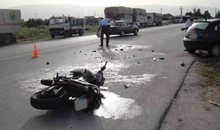
Car hits 16-year-old with motorcycle in Vau e Dejës
2025-06-27 16:36:06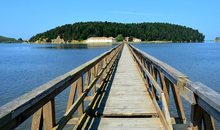
Pëson arrest kardiak, ndërron jetë turisti italian në Zvërnec
2025-06-27 16:26:10
Russia prepares summer offensive with help from North Korean troops in Ukraine
2025-06-27 16:15:18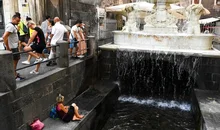

Bad news for migrants, Germany temporarily suspends family reunifications
2025-06-27 15:46:05
Alizoti: Here's when the internal analysis in the DP will begin
2025-06-27 15:33:59

Four reasons why you can't sleep at night
2025-06-27 15:08:40
Two elderly men rape 38-year-old woman in Tirana
2025-06-27 14:59:36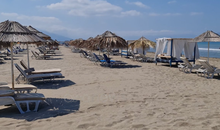
Italian dies on Zvërnec beach
2025-06-27 14:49:14
Love at first sight and separation, unpredictable July for signs!
2025-06-27 14:31:49
Veliaj 'fights' corruption allegations with PR campaign on TikTok
2025-06-27 14:23:10
Gas cylinder explodes in Shëngjin, injuring a woman
2025-06-27 14:09:39
Environmental scandal in Vjosa, prosecution of oil decantation responsibility
2025-06-27 13:58:57
Gray hair is not caused by age, stress burns pigment cells from the inside
2025-06-27 13:50:02
33-year-old man found dead in Elbasan
2025-06-27 13:36:26


Criminal who helped inspire 'Stockholm syndrome' theory dies
2025-06-27 13:19:50
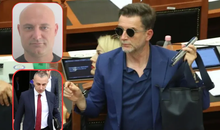

Guard found hanging in the building where he worked in Vlora
2025-06-27 12:51:44
Party political interest versus national interest
2025-06-27 12:43:06
Tabaku: The crisis in the pockets of Albanians is a consequence of misgovernment
2025-06-27 12:30:38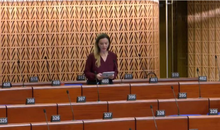

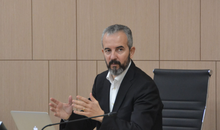
CEC distributes mandates for MPs in 4 districts
2025-06-27 12:02:23

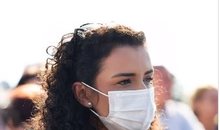

Haxhiu: If I don't get 61 votes in a secret ballot, I will withdraw
2025-06-27 11:24:32
Access to the e-mails of 3 SPAK prosecutors, Zamblak Gjonaj remains in prison
2025-06-27 11:06:45

Flamur Noka appears in SPAK
2025-06-27 10:40:04




Accused of being part of a criminal group, 23-year-old arrested in Vau e Dejës
2025-06-27 09:41:31
What does Kosovo risk from the lack of new institutions?
2025-06-27 09:32:57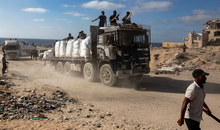
At risk of starvation, Israel closes aid route to Palestinians in Gaza
2025-06-27 09:21:58

Consecutive earthquake tremors in Tirana
2025-06-27 09:02:51
Does baking soda help with diabetes problems?
2025-06-27 08:53:29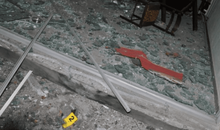
TNT explosion in a shop in Fushe Kruja
2025-06-27 08:46:49

Horoscope, what do the stars have in store for you today?
2025-06-27 08:20:01
Weather forecast, how temperatures will change during the day
2025-06-27 08:04:57
Morning Post/ In 2 lines: What mattered yesterday in Albania
2025-06-27 07:52:35

Race for the head of BKH/ Bushati: Only those who bow down make a career
2025-06-26 22:41:37
Lapaj: We can merge into a party with 'Nisma Thurje'
2025-06-26 22:25:53
Vote recount, Lubonja: Electoral manipulation took place before May 11
2025-06-26 22:12:23
Health Center inside the sports field, the wonder of the next project in Lushnje
2025-06-26 22:00:10


"The Task Force acted selectively"/ Bushati: SPAK was a government tool!
2025-06-26 21:33:19



Accident in Lezha, 69-year-old loses control and hits 4 parked vehicles
2025-06-26 20:51:34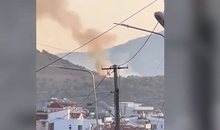


KPA upholds dismissal of judge Avni Sejdi
2025-06-26 20:15:54



Accident in Lezha, car ends up in the parking lot of a playground
2025-06-26 19:35:03
Special court for the war in Ukraine, Zelensky signs the agreement in Strasbourg
2025-06-26 19:17:43


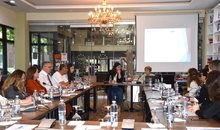
Report/ Albanian healthcare between limited transparency and under-financing
2025-06-26 18:34:34

Rama returns to Parliament after 6 months of absence
2025-06-26 18:14:37
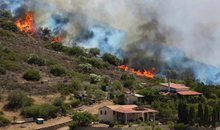
Greece on fire, several houses burn in Athens, residents evacuated
2025-06-26 17:46:29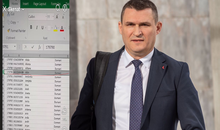

The College rejects the DP's request for the Vlora region
2025-06-26 17:29:18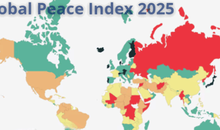
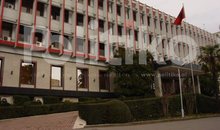

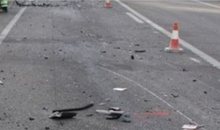
Accident on the Fier-Vlora axis, car goes off the road, 3 injured
2025-06-26 16:17:52
State Matura, mathematics exam results published
2025-06-26 16:05:33
Don't get burned by carelessness: Six mistakes that make sunscreen useless
2025-06-26 15:58:18
Caught with cocaine, 26-year-old arrested in Saranda (NAME)
2025-06-26 15:50:42
What does 5% of GDP on defense mean?
2025-06-26 15:42:39

Extreme heat wave, temperatures above 40°C next week
2025-06-26 15:26:12
State Matura/ Mathematics test results published, only 166 excellent students
2025-06-26 15:07:10
Race for BKH leader, 6 candidates disqualified, reason
2025-06-26 15:07:10
Have Sarah and Dj Pm broken up? Einxhel reveals the truth
2025-06-26 14:56:12

Neighbor's daughter stoned and police officers shot, two brothers arrested
2025-06-26 14:37:03
GJKKO leaves Ilir Meta in prison
2025-06-26 14:20:19
Anesthesiologist at QSUT, Nertila Kodra Gora, passes away
2025-06-26 14:20:04
Ilir Meta's defense arguments in the GJKKO are revealed
2025-06-26 14:00:15
5 super healthy foods you should add to your diet
2025-06-26 13:47:51
